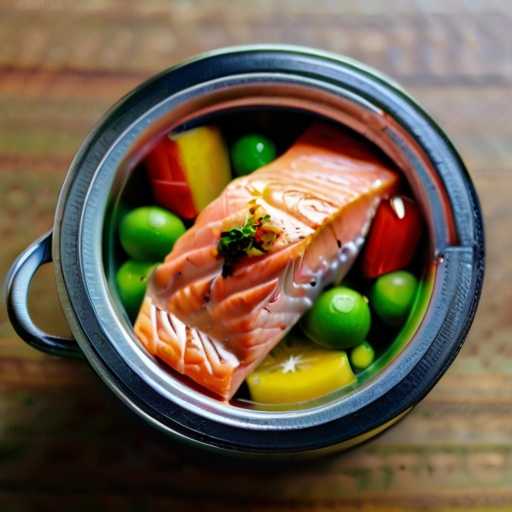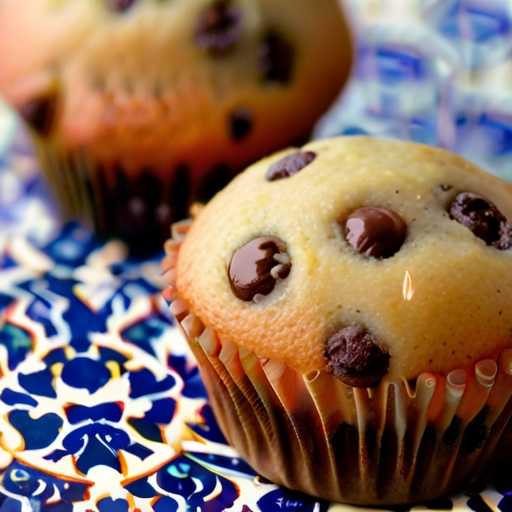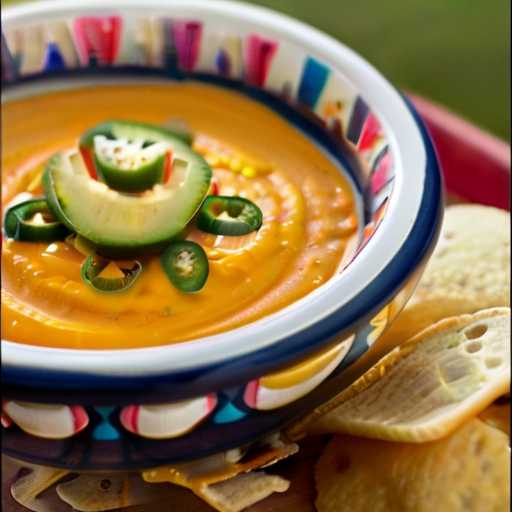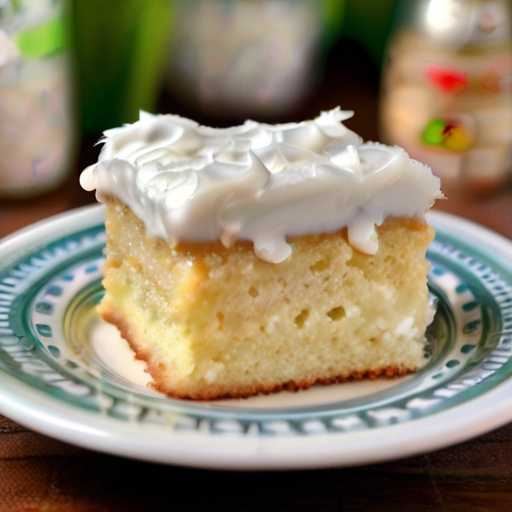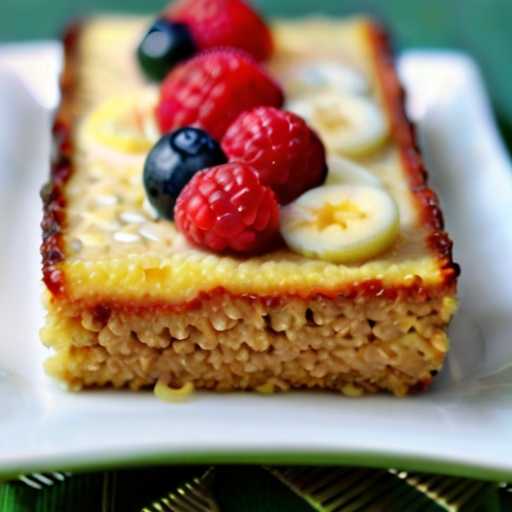How to Make Strawberry Jam
Strawberry jam is a sweet spread made from fresh strawberries, sugar, and pectin that has a valuable place in food cultures around the world. Derived from an early preservation technique, it is popular for its delicious taste and versatility. Homemade strawberry jam, a breakfast, dessert and snack staple, embodies tradition and craftsmanship. In this guide, you’ll learn step-by-step how to make this beloved delicacy, so you can feel a sense of nostalgia and satisfaction with every glass.
Strawberry Jam
Cuisine
International
Difficulty
Easy
Preparation
20 minutes
Cooking
30 minutes
Strawberry Jam Ingredients:
- Ingredients:
- • 2 pounds fresh strawberries, washed
- • 2 cups (400 g) granulated sugar
- • 2 tablespoons lemon juice
- • Optional: 1 tablespoon pectin (if desired) for firmer jam
- Substitute:
- • Fresh strawberries If you don’t have one, you can use: Since these are frozen strawberries, be sure to thaw them before using.
- • Other sweeteners such as honey or maple syrup can be used in place of granulated sugar in equal amounts, but the flavor and texture of the jam may change slightly.
- • If you want more acidity, you can use lime juice or citric acid instead of lemon juice.
Cooking Instructions:
- Preparation:
- 1. Wash the strawberries in cold water and remove the stems (pods) with a small paring knife or peeler.
- 2. Cut the strawberries into small, even pieces. You can also lightly mash to create a thicker consistency or puree to create a smooth jam.
- Cooking Instructions:
- 1. Place chopped strawberries, sugar, and lemon juice in a large, heavy-bottomed saucepan. Stir well to combine.
- 2. Place the pot over medium heat and bring to a gentle boil. Stir frequently to dissolve the sugar.
- 3. Once it boils, reduce the heat to low and simmer uncovered. Stir occasionally to avoid burning or sticking. Skim off any foam that appears on the surface with a spoon.
- 4. Simmer until the jam reaches the desired consistency, approximately 30-40 minutes. To check the consistency, you can do a spoon test. Dip a cold metal spoon into the jam, cover the back of the spoon, and if it doesn’t run right away, the jam is done.
- 5. As soon as the jam reaches the desired consistency, remove the pan from the heat and allow to cool slightly.
- 6. Using a ladle, carefully pour the hot jam into sterile glass jars, leaving about 1/4 inch of space at the top of each jar.
- 7. Wipe the rims of your glasses with a clean, damp cloth to remove any spills or drips. Cap the jar and close tightly.
- 8. Allow the jar to cool completely at room temperature before storing in the refrigerator. As the jam cools, it will get thicker.
- Critical Points:
- • When cooking the jam, be careful not to burn it, as it will be especially thick.
- • Make sure jars and lids are properly sterilized to prevent spoilage.
- • Use clean utensils each time scooping jam to avoid contamination.
Kitchen tools or utensils:
- Large pot or pot: For cooking the jam mixture.
- Wooden spoon or spatula: Used to stir ingredients during cooking.
- Cutting board: For cutting strawberries.
- Knife: For cutting strawberries and removing stems.
- Potato masher or fork: For mashing strawberries.
- Measuring cup and spoon: For accurately measuring ingredients.
- Storage jar with lid: For storing finished jam.
- Jar Lifter or Tongs: Used to handle hot jars during the canning process.
- Funnel: Easily transfer jam to jars without spilling.
- Kitchen Towel or Towel: Used for wiping the edges of glass and wiping up spills.
- Ladle: For transferring hot jam mixture into jars.
- Timer: Monitor cooking and processing times.
Tips for perfecting the taste of your homemade strawberry jam:
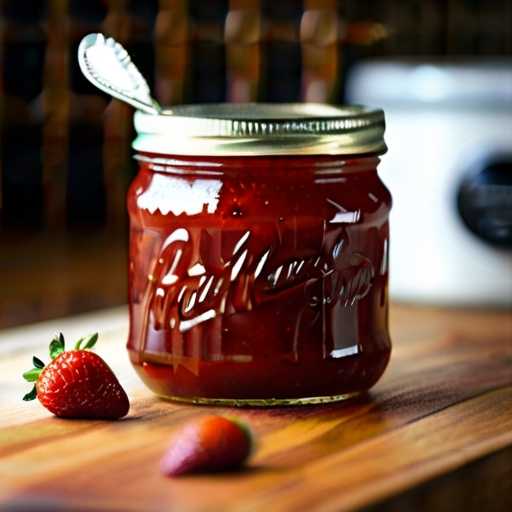
- Choose ripe, fresh strawberries: Choose strawberries that are ripe, fragrant, and free of blemishes and spots. The quality of strawberries directly affects the taste of the jam.
- Sweet and sour balance: Taste the strawberries before making the jam. Depending on how naturally sweet the berries are, adjust the sugar amount. You can further enhance the flavor by balancing the sweetness with a hint of acidity.
- Use high-quality sugar: Choose high-quality granulated sugar or natural sweeteners such as honey or maple syrup. Sugar gives just the right amount of sweetness while preserving the color and flavor of the strawberries.
- Add citrus notes: Adding a little lemon or lime juice brightens the flavor of strawberry jam and adds a subtle tartness. The acidity balances the sweetness and improves the overall flavor.
- Try flavor enhancers: To improve the flavor of your jam, consider adding a pinch of vanilla extract, grated ginger, or cinnamon. These complementary flavors can add depth and complexity.
- Cook slowly and gently. Avoid rushing the cooking process. By slowly simmering the strawberries with sugar, the flavor of the strawberries melds and becomes deeper. Stir frequently to prevent burning and ensure even cooking.
- Be careful not to overcook. Be careful not to overcook the jam. It can dull the taste and develop a thick, sticky consistency. Cook until the strawberries break down and the mixture reaches the desired consistency.
- Set Point Test: To check the set point of a jam, use a freeze test or candy thermometer. Proper settings will ensure the perfect texture and preserve the fresh taste of the strawberries.
- Remove bubbles: While the jam is cooking, bubbles may rise to the surface. Skim off the foam with a spoon to get a clear, jewel-like finish and eliminate any unwanted bitterness.
- Let it rest: Allow the strawberry jam to cool slightly before pouring into jars. This resting period allows the flavors to mature and develop a richer taste.
- Store properly: To preserve the flavor of your homemade jam, store it in sterile jars with tight-fitting lids. Store the bottle in a cool, dark place. B. Store in the pantry or cupboard for optimal flavor retention.
Serving Suggestion:
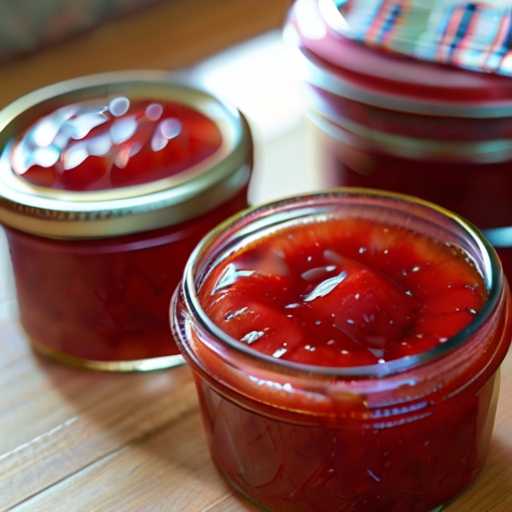
- Presentation: Pour the strawberry jam while warm into clean sterile jars. This will help seal and preserve the jam. For an attractive presentation, you can use small decorative glasses.
- Garnish: Strawberry jam is delicious on its own, but you can also add a touch of elegance with a simple garnish. Placing a sprig of fresh mint or a slice of lemon at the edge of the glass can create a visually appealing contrast to the bright red color of the jam.
- Side dish: Strawberry jam goes perfectly with a variety of dishes. Here are some products recommended for garnishes and garnishes.
- Toast: Classic toast is perfect for spreading strawberry jam. Whether it’s white bread, whole wheat, or sourdough, toasted bread adds a satisfying crunch that complements the smooth texture of jam.
- Scones: Enjoy a delicious snack with freshly baked scones and strawberry jam. The richness of the butter in the scones and the fruity sweetness of the jam are a perfect match.
- Yogurt: For a lighter version, add strawberry jam to a bowl of creamy yogurt. The combination of tart yogurt and sweet jam creates a wonderful contrast of flavors and textures.
- Cheese: Get creative and pair strawberry jam with your choice of cheese. Soft cheeses like brie and cream cheese work particularly well, but you can also experiment with harder cheeses to create unique flavor combinations.
- Pancakes or Waffles: A stack of fluffy pancakes or crispy waffles topped with strawberry jam is sure to make an impressive breakfast or brunch experience. Sweet jam gives a special flavor to every bite.
- Storage: After serving, store leftover strawberry jam in the refrigerator. Properly sealed jars can be stored in the refrigerator for several weeks, so you can always enjoy the delicious taste of homemade jam.
Storage and Leftovers:

- Storage:
- Cooling: After making the strawberry jam, let it cool to room temperature. This will allow the jam to set properly and prevent condensation in the storage container.
- Choose a storage container: Place the jam in a clean, airtight glass or plastic container. Make sure the container is thoroughly cleaned and dry before use.
- Refrigerate: If you want to use the jam within a few weeks, store it in the refrigerator. The low temperature preserves the freshness and flavor of the jam.
- Freezing (optional): If you have a large amount of jam or want to keep it for a long time, you can freeze it. Use freezer-safe containers and leave space at the top to allow food to expand when frozen. Don’t forget to label the container with the date for easy identification.
- Avoid contamination: To avoid contamination, always use clean equipment when scooping jam from containers. Moisture and leftover food can cause spoilage.
- Reheating Instructions (if applicable): If you prefer your
- strawberry jam warm or want to use it in a recipe that requires heating, you can safely reheat it using the following methods:
- Microwave: Electronic Place desired amount of jam in a microwave-safe bowl. . Heat briefly, 15 to 20 seconds, stirring occasionally, until desired temperature is reached. Be careful not to overheat to avoid burns.
- Stove: Pour the jam into a saucepan and heat over low to medium heat, stirring constantly to avoid burning or sticking. Once fully heated, remove from heat and allow to cool slightly before using or returning to storage container.
- Water Bath: If the jam is too thick or crystallized, you can soften it by heating it briefly in a water bath. Place the sealed jam jar in a pot of hot water and set over low heat. Let stand, stirring occasionally, until the jam reaches the desired consistency.
Nutritional information for homemade strawberry jam (per tablespoon):
- Calories: 50kcal
- Fat: 0g
- Protein: 0g
- Carbohydrates: 13g
- Dietary fiber: 0.5g
- Note: Nutritional values are a guideline and do not include There may not be any. It depends on the specific ingredients and cooking method.
Health Benefits of Homemade Strawberry Jam
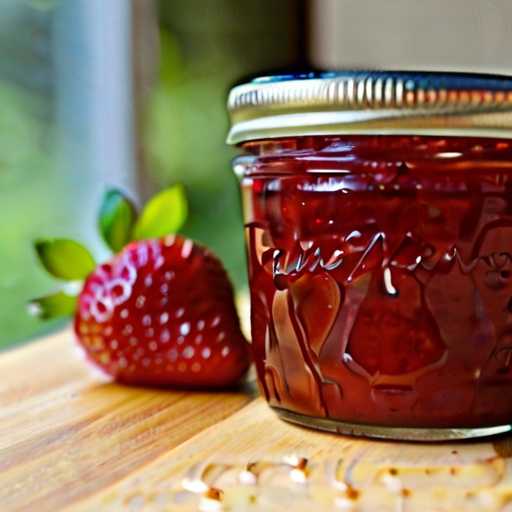
- Nutrient rich: Strawberries contain vitamin C, It is rich in essential nutrients such as manganese and folic acid. And potassium. Making your own jam retains more of these nutrients compared to store-bought jams that have added sugar and preservatives.
- Rich in antioxidants: Strawberries are rich in antioxidants such as flavonoids and phenolic compounds that protect cells from free radical damage. Consuming homemade strawberry jam provides a natural source of these beneficial antioxidants.
- Strengthens Immunity: The vitamin C found in strawberries supports a healthy immune system. Regular consumption of homemade strawberry jam strengthens the body’s defenses against diseases and infections.
- Promotes Heart Health: Homemade strawberry jam with minimal added sugar contributes to heart health. The antioxidants and fiber found in strawberries may help reduce your risk of heart disease by lowering blood pressure and improving cholesterol levels.
- Supports Digestive Health: Strawberries are rich in fiber, which is essential for maintaining a healthy digestive system. Incorporating homemade strawberry jam into your diet can promote regularity and prevent constipation.
- Less added sugar: When you make your own strawberry jam, you can control how much sugar you add. Reducing the amount of sugar or using natural sweeteners like honey or maple syrup can reduce your overall sugar intake, which has a positive effect on weight management and overall health.
- Homemade strawberry jam is delicious and can be enjoyed in a variety of ways, such as spreading it on toast or using it as a topping for yogurt or oatmeal. Adding this nutritious spice to your meals and snacks will improve both the taste and nutritional value of your meals.
DIY and Professional Bakery: How to Make Strawberry Jam
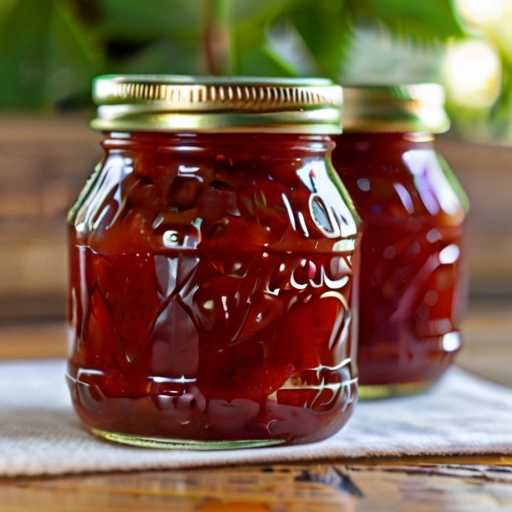
DIY:
- Advantages:
- Customization: DIY gives you complete control over the ingredients used and can be customized based on personal taste preferences and dietary restrictions .
- Cost-effective: Making strawberry jam at home is more budget-friendly, especially when strawberries are in season or purchased in bulk.
- Satisfaction: Creating something from scratch that leads to a rewarding experience provides a sense of accomplishment and satisfaction.
- Creative Freedom: DIY recipes allow for creative expression by giving you the opportunity to experiment with flavors, textures, and additional ingredients.
- Reducing preservatives: Making jam at home can minimize or eliminate the use of artificial preservatives, potentially making the final product healthier.
- Disadvantages:
- Time-consuming: DIY strawberry jam may not be practical for busy people because it takes time to prepare, cook, and sterilize the jars.
- Skill Requirement: Achieving the right consistency and flavor can be difficult for beginners and may take several tries.
- Equipment Requirements: Making homemade jam may require purchasing special equipment, such as canners, jars, and thermometers, which increases initial costs.
- Limited shelf life: Homemade jams usually have a shorter shelf life than commercially available jams and require proper storage and consumption within a specific time period.
- Possible error: An error in the process similar to the following: B. Improper sterilization or sealing can lead to spoilage and unsafe ingestion.
- Budget Considerations:
- Material Costs: Making your own strawberry jam is cheaper, especially when strawberries are in season or purchased in bulk.
- Capital Investment: May require initial investment in canning equipment and jars, but can be used for future jam-making projects.
- Storage Solutions: Budget for appropriate storage containers and space to keep finished jam jars fresh and safe for consumption.
Professional Bakery:
- Advantages:
- Consistency: Professional bakeries have the expertise to consistently produce high quality strawberry jam with precise flavor and texture.
- Convenience: Buying jam from a bakery saves time and effort as no preparation or cooking is required.
- Types: Bakeries may offer jams in a variety of flavors beyond traditional strawberry, providing choices for customers with different tastes.
- Long shelf life: Commercial jams tend to have long shelf lives due to strict manufacturing processes and added preservatives.
- Packaging: Professionally packaged jams make attractive gifts or can be added to gift baskets, increasing their appeal.
- Disadvantages:
- Cost: Purchasing strawberry jam from a professional bakery can be more expensive than making it at home due to labor costs, overhead, and profit margins.
- Limited Customization: While some bakeries may offer customization options such as sugar content and organic ingredients, the level of customization is generally more limited than DIY.
- Preservatives: Commercial jams may contain more preservatives and additives than homemade ones and may not suit certain dietary preferences.
- Less Control: Consumers have less control over the ingredients used in commercially available jams, which can be a problem for people with certain dietary restrictions and preferences.
- Dependency: Relying on professional bakers to make jam can lead to dependence on commercial products rather than fostering DIY skills and independence.
- Budget Considerations:
- Cost per Jar: Consider the cost per jar of professionally made strawberry jam compared to the materials and equipment needed for DIY.
- Buy in bulk: Some bakeries may offer discounts for buying in bulk, making it more cost-effective for larger quantities.
- Special Occasions: Consider the cost of professionally made jam for special occasions or gifts, balancing budget constraints with desired quality and convenience.
Budget-friendly options for making strawberry jam:

- Effordable Decoration Ideas:
- Use seasonal strawberries: Buy strawberries when they are in season and in abundance. Prices tend to be lower during peak seasons, making jam more budget-friendly.
- Buy in bulk: Look for bulk deals or visit your local farmers market. You can often get discounts when you buy strawberries in bulk.
- Choose frozen strawberries: Frozen strawberries are often cheaper than fresh strawberries and are just as good for making jam. Look for store brand options or buy in bulk when they’re on sale.
- Make in small batches: Instead of making a large batch of jam at once, make it in small batches using just a few ingredients. This can help reduce costs, especially if you’re experimenting with flavors or don’t need a large amount of jam.
- Reuse jars: Instead of buying new jars, save and clean used jars from store-bought jams and other foods. This lowers waste in addition to saving you money.
- Creative Solutions for Making Strawberry Jam:
- Natural Pectin: Instead of commercially available pectin, use natural pectin sources such as apple cores or citrus peels. This not only reduces costs, but also gives the jam a unique flavor.
- Mix with other fruits: Increase your strawberry supply by mixing with other fruits such as apples and rhubarb. This increases the complexity of the flavor profile while making the most of inexpensive fruit.
- DIY Labels and Packaging: Instead of purchasing expensive labels and packaging, create your own labels using recycled materials or printable labels. Get creative with your design and personalize it as a gift or personal.
- Reuse equipment: Instead of buying special jam-making tools, use equipment you already have in your kitchen. For example, use a large pot for cooking rather than a special jam pot, and use a potato masher instead of a food processor to mash fruit.
- Experiment with flavor combinations: Get creative with flavor combinations by adding herbs like mint and basil, spices like cinnamon and ginger, and even balsamic vinegar. This allows you to improve the taste of your jam without spending a lot of money.
Variations to try when making strawberry jam:

- Mixed Berry Jam: In addition to strawberries, add other berries such as raspberries, blueberries, or blackberries to create a more complex flavor.
- Spiced Strawberry Jam: Add spices like cinnamon, ginger, and cloves to the jam mixture for a warm, aromatic touch.
- Citrus Flavor: Add lemon, lime, or orange juice and zest to enhance flavor and create a bright, tangy jam.
- Herbal Twist: Try adding herbs like basil, mint, or thyme to give your jam a subtle herbal flavor.
- Vanilla Bean: Split a vanilla bean and add the seeds to the jam mixture to create a delicate vanilla aroma.
- Chia Seed Jam: Use chia seeds as a natural thickener in place of traditional pectin for a healthier alternative. Just mix in mashed strawberries and chia seeds to thicken it.
- Sweetened with Honey: For a more natural sweetener, substitute honey for part or all of the sugar.
- Balsamic reduction: Adding a drizzle of balsamic vinegar to the jam during cooking adds depth and complexity to the flavor.
- Roasted Strawberry Jam: Roast the strawberries in the oven before making the jam to intensify the sweetness and create a caramel-like flavor.
- Piece version: Mash the strawberries coarsely or leave some pieces whole to give the jam a more earthy consistency.
Why Homemade Strawberry Jam Stands Out

- Freshness: One of the main things that makes homemade strawberry jam special is its freshness. Unlike commercial varieties that contain preservatives or sit on the shelf for long periods of time, homemade jam allows you to enjoy fresh strawberries at home. This freshness directly translates into brighter flavors and a more satisfying texture.
- Customization: When you make your own strawberry jam, you have complete control over the ingredients and can adjust the recipe to your liking. Whether you prefer a softer consistency or enjoy the added texture of fruit chunks, homemade jam allows you to customize your jam to your liking.
- High-quality raw materials: Another factor that sets homemade strawberry jam apart is the quality of the raw materials used. Ripe, flavorful strawberries are hand-selected and combined with high-quality sugar and lemon juice to exude the natural sweetness and tartness of fresh fruit in every spoonful.
- No Artificial Additives: Unlike many commercial jams that contain artificial flavors, colors and preservatives, homemade strawberry jam is based only on natural ingredients. Not only does the lack of additives give it a cleaner taste, but it also makes homemade jam a healthier option for you and your family.
- The Satisfaction of Creation: There’s something uniquely satisfying about creating something from scratch, and homemade strawberry jam is no exception. The process of selecting, preparing, and cooking fruit allows you to connect with your food in a way that enhances your overall dining experience.
- A valuable gift: Homemade strawberry jam also makes a thoughtful gift. Whether you present it in a beautifully decorated jar or add it as part of a homemade gift basket, gifting someone a jar of homemade jam is a gesture that’s sure to be appreciated.
- Versatility: Homemade strawberry jam is incredibly versatile beyond just spreading it on toast or scones. It can also be used as a topping for pancakes, waffles, or yogurt, mixed into oatmeal or ice cream, or incorporated into flavorful dishes such as meat glazes and salad dressings.
Vegan and gluten-free strawberry jam recipe

- Ingredients:
- 1 kg fresh strawberries, washed and peeled
- 1 cup granulated sugar (adjust according to the taste and sweetness of the strawberries)
- 2 tablespoons chia seeds
- 2 tablespoons lemon juice
- 1 teaspoon vanilla extract (optional)
- Directions:
- Prepare strawberries:
- Wash strawberries thoroughly under running water.
- Remove the stem and skin using a sharp knife or peeler.
- Cut the strawberries into small pieces or slices as desired.
- Cook the strawberries:
- Place the chopped strawberries in a large non-reactive pot or saucepan.
- Add granulated sugar and lemon juice to the strawberries.
- Cook the mixture over medium heat, stirring occasionally, until the strawberries begin to release their juices and the sugar is completely dissolved. Usually this takes him about 5-7 minutes.
- Mash the strawberries:
- Use a potato masher or fork to mash the strawberries until they reach the required consistency when they are soft and have released their juices.
- If you prefer a creamier jam, you can also puree the strawberries in a hand blender.
- Add chia seeds:
- Stir chia seeds into strawberry puree.
- Chia seeds act as a natural thickener for jams and also provide additional nutritional benefits.
- Simmer the mixture for an additional 10 to 15 minutes, stirring occasionally, until the desired jam consistency is reached.
- Flavor (optional):
- If desired, add vanilla extract to the jam for extra flavor. Stir well to combine.
- Testing for doneness:
- To check if the jam is ready, place a small amount on a cooled plate and tilt it slightly. The jam is done when it doesn’t run right away and has a jam-like consistency.
- If there is too much liquid, continue cooking for a few minutes and repeat the test.
- Cooling and Storage:
- Once the jam has reached the desired consistency, remove from the heat and allow to cool completely.
- Pour the cooled jam into clean sterile jars.
- Put the container in the refrigerator after tightly sealing it. As the jam cools, it will get thicker.
- Enjoy our vegan, gluten-free homemade strawberry jam as a topping on toast, pancakes, or desserts.
- Prepare strawberries:
Strawberry Jam Recipe Notes:

- How to choose strawberries: For the best flavor, choose ripe, fragrant strawberries. Select fruit that is firm to the touch, has a rich red color, and is devoid of any imperfections or stains. Local, seasonal strawberries tend to offer the most vibrant flavor.
- Preparation: Wash strawberries thoroughly and remove stems and unnecessary parts. Some recipes call for peeling the strawberries and removing the green leaf caps and white seeds. You will get a smoother texture if you take this optional step.
- Sweetness: The amount of sugar needed depends on personal preference and the natural sweetness of the strawberries. Taste the strawberries to determine sweetness before cooking and adjust sugar accordingly. Sugar not only adds sweetness, but also helps preserve the jam and create a thick consistency.
- Pectin: Pectin is a natural substance found in fruits that helps jams and jellies set. Strawberries contain pectin, but some varieties may have low pectin levels. It will harden with the addition of lemon juice, which is high in natural pectin. Alternatively, for more reliable results, you can use commercially available pectin according to the manufacturer’s instructions.
- Cooking time: Please be patient when cooking the jam. Cooking slowly over low to medium heat allows the flavors to fully develop and achieves the desired consistency. Stir frequently to prevent the jam from sticking to the bottom of the pan and burning.
- Test for doneness: To determine if the jam has reached the desired consistency, perform a plate test. Place a small amount of jam on a chilled plate and let cool for a few seconds. It’s done when you poke it with your finger and wrinkles appear. If not, continue cooking until desired consistency is reached and repeat the test.
- Storage: To ensure food safety and extend shelf life, properly sterilize jars and lids before filling with hot jam. Jars should be kept sealed and dark. For optimal flavor and quality, store in the refrigerator after opening and use within a few weeks.
- Versatility: Strawberry jam is delicious spread on toast, but it’s also a versatile ingredient that can be used in sweet and savory dishes. You can also use it as a filling in cakes and pastries, mix it into yogurt or oatmeal, or pair it with cheese on a charcuterie board for a fun flavor contrast.
FAQ about making strawberry jam:
- 1. What ingredients do I need to make strawberry jam?
- • To make strawberry jam, you need fresh strawberries, granulated sugar, lemon juice, and pectin (optional for a thicker jam). For the most flavor, make sure the strawberries are ripe..
- 2. Do I need any special equipment to make strawberry jam?
- • Yes, a large pot to cook the jam, a potato masher or blender to mash the strawberries, jars to store the jam, and a jar to store the jam. If you want to store your food for a long time, you will need basic kitchen supplies such as a storage kit. life.
- 3. How do I know when my jam is done cooking?
- • Jam is done when it reaches its gelling point, usually about 220°F (104°C). You can also do the “plate test” by placing a small amount of jam on a chilled plate and running your finger across it. The jam is ready when it wrinkles and holds its shape.
- 4. Can I customize the strawberry jam with other flavors?
- • Of course! You can enhance the flavor of strawberry jam by adding ingredients such as vanilla extract, balsamic vinegar, and even herbs such as basil. Try small quantities to find your favorite flavor combination.
- 5. How should I store homemade strawberry jam?
- • Once the jam is cooked and packed in jars, make sure the lids are tightly closed. If you plan to use the jam within a few weeks, store it in the refrigerator. For long-term storage, seal the jar using proper canning techniques and store in a cool, dark place. Always label the jar with the date of preparation for reference.
In summary, making strawberry jam is a simple process that requires minimal ingredients and effort. If you follow the instructions in the recipe, you will have a delicious homemade jam with the taste of fresh strawberries. The key points are to wash and prepare the strawberries, add sugar and lemon juice and cook until thick, and store the jam properly in sterilized jars. With this recipe, anyone can enjoy the sweetness of summer strawberries all year round.

